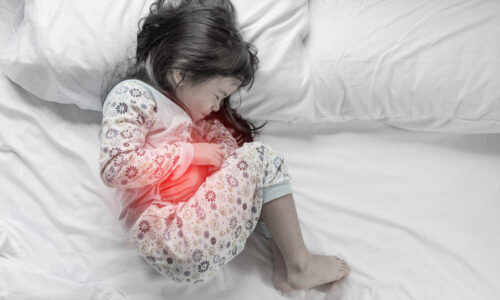Abdominal Pain in Children: Causes and Clinical Approach. Dr. Narmin Azizova

Abdominal pain is a common complaint among children and can result from a wide variety of underlying conditions. In most cases, the pain is benign, but sometimes it may signal more serious medical or surgical issues that require prompt intervention. It remains one of the leading reasons for pediatric visits.
Common Causes:
The causes of abdominal pain vary depending on the child’s age and associated symptoms. The most frequently observed causes include:
- Gastrointestinal infections (viral or bacterial)
- Parasitic infections, especially helminths
- Constipation, particularly chronic forms
- Colic (gas-related cramps), especially in infants under 6 months
- Urinary tract infections
- Food allergies or food poisoning
Classification by Duration:
- Acute abdominal pain – typically lasts less than 3 hours and is often not associated with serious pathology.
- Chronic or recurrent abdominal pain – lasts longer than 3 months and affects the child’s daily life. About 85–90% of these cases are functional, while 10–15% are due to organic causes.
Organic vs. Functional Abdominal Pain:
Abdominal pain is typically categorized into organic and functional causes.
Organic Causes:
- Nighttime pain and waking up due to pain
- Fever, headache, rash, anemia
- Loss of appetite or weight
- Growth and developmental delays
- Joint pain or delayed puberty
- Perianal lesions
- Systemic illnesses (e.g., FMF – Familial Mediterranean Fever)
Functional Causes:
- Functional dyspepsia – discomfort in the upper abdomen, early satiety, bloating, nausea
- Irritable Bowel Syndrome (IBS) – pain relieved by defecation, with changes in stool frequency and consistency
- Aerophagia – swallowing air, resulting in bloating, frequent belching, and flatulence. It may be associated with habits like thumb sucking or chewing gum.
Warning Signs to Watch:
Parents should be alert if the child experiences:
- Nighttime awakening due to pain
- Pain with fever, vomiting, diarrhea, painful urination, or blood in the stool
- Abdominal distention or localized tenderness
- Pain associated with weight loss or poor appetite
Serious Conditions Requiring Urgent Care:
- Appendicitis – acute pain in the lower right abdomen, worsened by movement
- Intestinal obstruction or intussusception – in infants, can cause pain that wakes the child from sleep
- Testicular torsion or ovarian torsion – causes severe pain and requires immediate surgery
Gender-Specific Considerations:
- In girls: premenstrual pain or ovarian torsion
- In boys: testicular torsion – an emergency condition
Psychosomatic and Emotional Factors:
In some children, stress, school anxiety, or family tension may contribute to functional abdominal pain, particularly in school-aged children.
Tips for Parents:
- Observe associated symptoms when your child complains of abdominal pain.
- Consider constipation, dietary habits, and emotional stress.
- If the pain is persistent or severe, consult a doctor promptly.
- Avoid self-medicating with antibiotics or painkillers at home.
Conclusion:
Abdominal pain in children can range from mild viral infections to serious gastrointestinal or surgical conditions. A thorough history, physical examination, and appropriate investigations are essential to distinguishing benign from serious causes and to avoid unnecessary interventions. Studies show that most episodes of abdominal pain are self-limiting, while only a small proportion require medical or surgical treatment, underlining the importance of accurate diagnosis.

Narmin Azizova, the founder of Pediatriya.az


